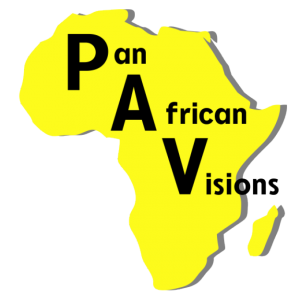FOUR STRATEGIC PRIORITIES FOR AFRICAN TELCO OPERATORS IN 2020
February 26, 2020
By Samantha Naidoo, Telco Industry Value Advisor at SAP Africa
JOHANNESBURG, South Africa, February 26th, 2020, -/African Media Agency (AMA)/- African telco operators face a landmark five-year period as they strive to reimagine their business models and build new capabilities that will ensure their future success. Currently, non-traditional market entrants are putting pressure on telco operators’ profit margins, forcing them to look at ways of quickly delivering new services to meet customer demands.
The introduction of telco operator -enabled IoT networks and the upcoming rollout of 5G is also creating a new battleground for connecting a sensor-based world. The potential benefits to telco operators for 5G rollout are immense: total revenue from 5G is expected to reach $1.6-trillion by 2026, while the revenue opportunity for telco operators to use 5G to address industry digitisation is as much as $582-billion.
However, to unlock this, telco operators will need to reimagine their business models: 72% of 5G growth potential requires operating model transformation.
The key to success in the experience economy is building intelligent enterprise capabilities that connects experiences with operations, and operations with data to guide business decisions. An intelligent enterprise collects insights from customers, employees, products and brands at every touchpoint, and uses powerful technologies to sense opportunities, risks and trends before turning this intelligence into action.
In the year ahead, telco operators need to transform their business models by changing focus from products to customer-centric experiences. It’s vital that they start closing the gap between insights and actions by listening and adapting to customer needs while operating on a single intelligent experience platform. Once telco operators can anticipate and deliver on the needs of customers, they can start transforming their generic sell-to and sell-through business models into an ecosystem approach that can build success in markets other than traditional connectivity.
In light of this, telco operators need to look at four key priority areas for 2020 and beyond, namely:
Putting the customer first
Customers that have become accustomed to the digital experience provided by Internet companies are expecting the same of their telco service providers. By 2025, successful telcos will gain and retain customers by providing proactive digital customer experiences across all touch points, delivering tailored solutions and services to consumers and enterprises.
To get there, telcos need to enable automation and high levels of personalisation to improve customer experiences at the right cost, using tools like chatbots and machine learning technologies. By developing a deep understanding of customer behaviour, telcos can transform their businesses by expanding in adjacent industries and markets while adopting new business models.
Fostering operational excellence
Over the past decade, average revenue growth among telco operators has been slowing down as over-the-top (OTT) providers and other disruptors put pressure on traditional revenue streams. Telcos are now faced with huge capital expenditure from the rollout of 5G infrastructure at a time when operational expenses are increasing. In the past, telcos have faced high maintenance costs and low return on investment along the asset lifecycle, mostly due to broken processes and inconsistent or inaccurate data. The 5G requirement will only add further pressure.
The introduction of digital twin technology brings greater visibility of contingent workers, equipment, network sites, spare parts and cables to equipment providers, maintenance contractors and tower owners. This opens the door to an operating model that enables greater sharing and collaboration. And with new technologies for managing connected assets, telcos can streamline infrastructure operations by creating a digital representation of the network sites in the cloud, giving them granular data over the financial and operating performance of individual towers and other assets.
Diversifying revenue streams
Telco operators are under no illusion that basic communication services – ‘connectivity only’ – is the future of their business success. Telcos need to elevate their position in the value chain by going beyond just a ‘dumb pipe’ business model. By 2025, the most successful telcos will transform into digital life providers, data brokers, digital transformation enablers and cloud service providers.
To get there, telco operators need to optimise new revenue streams targeting consumers and enterprises. Mergers and acquisitions will extend their capabilities and unlock new markets or geographies, but it’s important that telcos have a digital core that can seamlessly integrate new service offerings without affecting the customer experience. An ecosystem model that enables telcos to adopt, enable and retain digital partners and their innovations will open up telcos’ own strengths and capabilities to the ecosystem to create a powerful collaborative approach to market.
Enabling intelligent connectivity
Faced with steep infrastructure costs and uncertainty over how to maximise return on investment into 5G technology, telcos need to carefully consider the business case for 5G. In these early days, the key is to operate 5G networks as efficiently as possible while maximising revenue potential from new features made possible by this next-generation technology. A combination of the intelligent enterprise model and the telco industry’s intelligent connectivity provides the clearest path to new business models and revenue streams for 5G.
By 2025, telcos could become leading enablers of the intelligent enterprise for other industries, with networks becoming smarter, more virtual and closer to zero-latency. Telcos will use new technologies to anticipate congestion, predict failures and even self-heal. The key to achieving this is to start optimising infrastructure management now. Predictive models that minimise equipment downtime and improve network performance can be enabled by developing a single, holistic view of real-time, repeatable and pre-emptive insights.
We may also see new models of co-innovation around 5G, bringing various role-players into a collaborative coalition that accelerates innovation around edge computing, smart cities and other value drivers enabled by 5G.
Distributed by African Media Agency (AMA) on behalf of SAP Africa.
Visit the SAP News Center. Follow SAP on Twitter at @SAPNews.
About SAP
As the Experience Company powered by the Intelligent Enterprise, SAP is the market leader in enterprise application software, helping companies of all sizes and in all industries run at their best: 77% of the world’s transaction revenue touches an SAP® system. Our machine learning, Internet of Things (IoT), and advanced analytics technologies help turn customers’ businesses into intelligent enterprises. SAP helps give people and organizations deep business insight and fosters collaboration that helps them stay ahead of their competition. We simplify technology for companies so they can consume our software the way they want – without disruption. Our end-to-end suite of applications and services enables more than 440,000 business and public customers to operate profitably, adapt continuously, and make a difference. With a global network of customers, partners, employees, and thought leaders, SAP helps the world run better and improve people’s lives. For more information, visit www.sap.com.
# # #
Any statements contained in this document that are not historical facts are forward-looking statements as defined in the U.S. Private Securities Litigation Reform Act of 1995. Words such as “anticipate,” “believe,” “estimate,” “expect,” “forecast,” “intend,” “may,” “plan,” “project,” “predict,” “should” and “will” and similar expressions as they relate to SAP are intended to identify such forward-looking statements. SAP undertakes no obligation to publicly update or revise any forward-looking statements. All forward-looking statements are subject to various risks and uncertainties that could cause actual results to differ materially from expectations. The factors that could affect SAP’s future financial results are discussed more fully in SAP’s filings with the U.S. Securities and Exchange Commission (“SEC”), including SAP’s most recent Annual Report on Form 20-F filed with the SEC. Readers are cautioned not to place undue reliance on these forward-looking statements, which speak only as of their dates.
© 2020 SAP SE. All rights reserved.
SAP and other SAP products and services mentioned herein as well as their respective logos are trademarks or registered trademarks of SAP SE in Germany and other countries. Please see https://www.sap.com/copyright for additional trademark information and notices.
Note to editors:
To preview and download broadcast-standard stock footage and press photos digitally, please visit www.sap.com/photos. On this platform, you can find high resolution material for your media channels. To view video stories on diverse topics, visit www.sap-tv.com. From this site, you can embed videos into your own Web pages, share video via email links, and subscribe to RSS feeds from SAP TV.
For customers interested in learning more about SAP products:
Global Customer Center: +49 180 534-34-24
United States Only: 1 (800) 872-1SAP (1-800-872-1727)
For more information, press only:
Delia Sieff, SAP Africa, +27 (11) 235 6000, delia.sieff@sap.com
Adam Hunter, SAP Africa, +27 (711) 787 035, adam.hunter@sap.com
SAP Press Room; press@sap.com
Source : African Media Agency (AMA)









